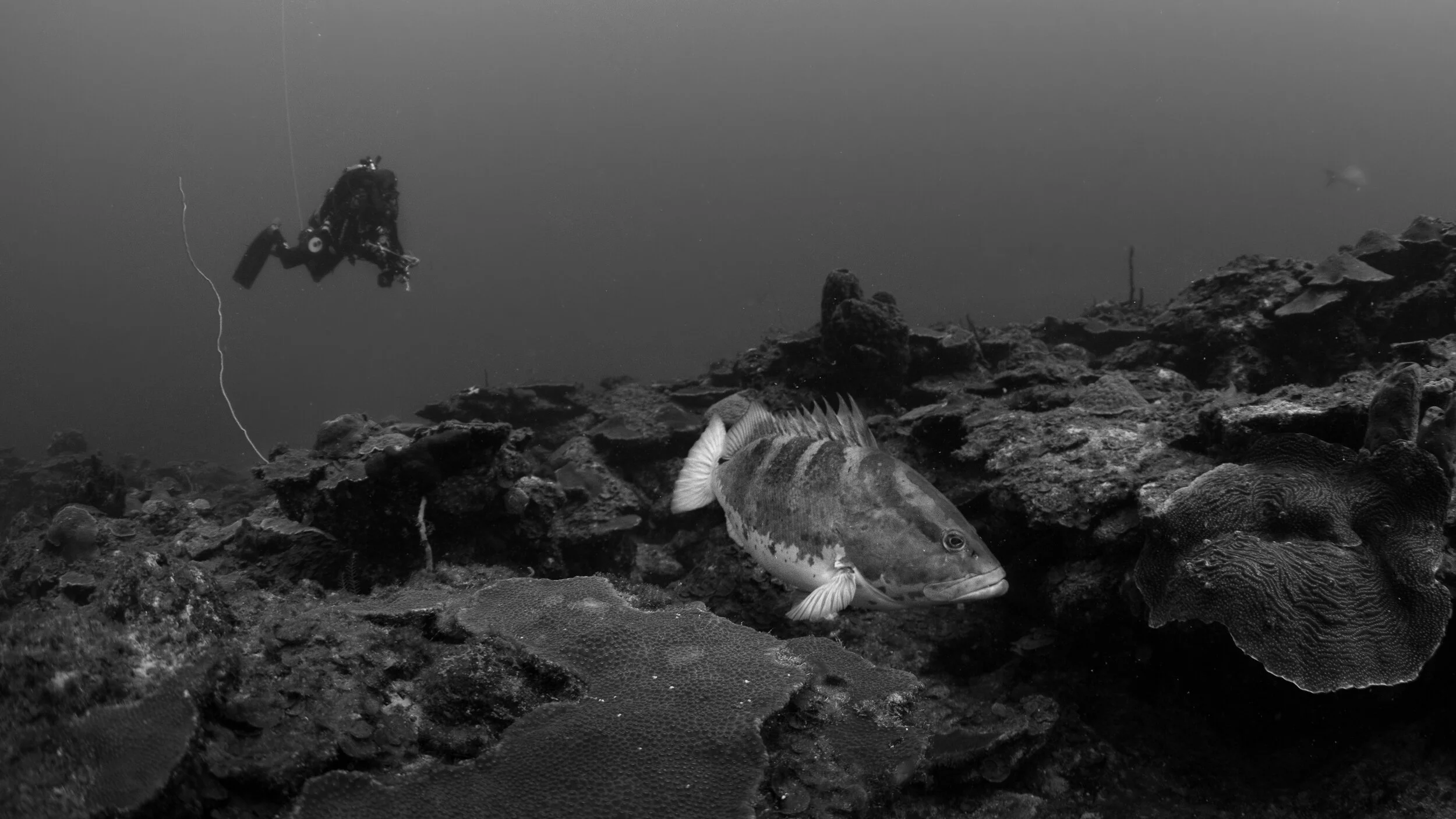
Nassau grouper recovery
There are few fish in the Caribbean as revered as the Nassau Grouper. They've plaid an integral role in many Caribbean islands' livelihood as a cultural symbol and food source. Nassau Grouper also play an essential role in the functioning of a healthy coral reef. As top predators, they help control other reef organisms' populations, helping to maintain an ecological balance.
what went wrong
A few days after the full moon in November through April, Nassau Grouper form spawning aggregations containing thousands of fish.
In the 1970s, these spawning aggregations became the target of many fishing communities, as it was easy to increase catch yields with minimal effort.
Removing so many fish at once during their spawning season resulted in few Nassau Grouper completing their reproduction cycle and creating the next generation of offspring.
Overfishing resulted in a collapse of Nassau Grouper populations, which are now listed as “Critically Endangered” by the International Union for the Conservation of Nature.
Nassau Grouper are the lions and tigers of Caribbean coral reefs. As they patrol coral reefs, they play an important role in regulating many other reef animals.
University of the Virgin Islands research divers Rossie Ennis and Adam Glahn count Nassau Grouper at the Grammanik Bank, South of St. Thomas, U.S. Virgin Islands. These dives can be as deep as 140 feet below the surface and require the use of technical diving equipment to perform safely
road to recovery
Ten miles south of St. Thomas, U.S. Virgin Islands, is the location of one of these Nassau Grouper spawning aggregations. In 2005 there was an emergency closure of this area called the Grammanik Bank.
The closure was possible due to both scientist's and fishermen's cooperation, who worked together to determine the no-fishing area's size, location, and time period.
Over the last sixteen years, the number of Nassau Grouper counted at the Grammanik Bank spawning aggregation has steadily increased. A testament that well-planned conservation is working.
“when i first started diving there if i saw 20 Nassau Grouper on a dive that was a great dive. now on the right day, i can see 500 on a dive”

